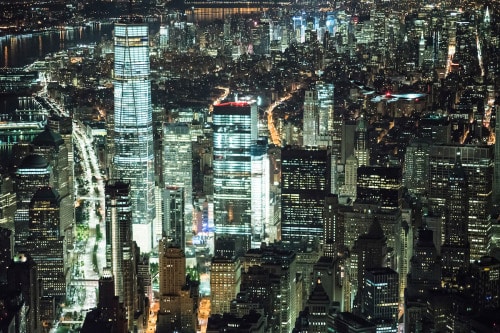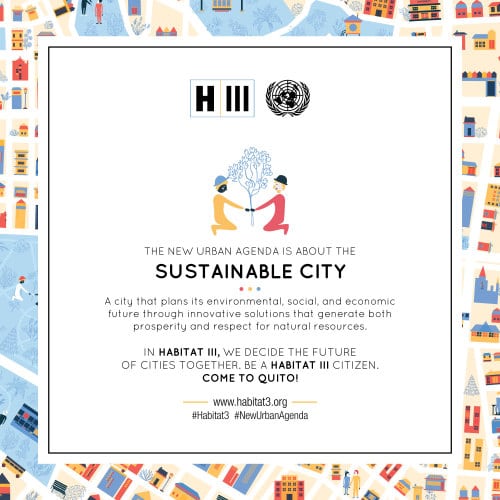By Bertrand Piccard – Initiator, Chairman and Pilot of Solar Impulse, United Nations …

The cities of the future will be big, because nothing can stop their expansion. But they could be clean if we realize fast enough that energy efficiency is a new world market, a new industrial revolution that can bring about sustainable development and significant economic growth.
In order to understand that growth reduction is impossible, one only needs to look at the thousands of skyscrapers with more than 50 floors, which are being built out of the ground in the emerging countries. Nothing can stop the expansion of the tentacle-like cities, not even the awareness that we are putting our planet and ourselves humans at great risk.

The world is in the strongest phase of urban development ever. Nearly half the world’s population, 3.5 billion people, live in cities today and by 2050 there will be twice as many. Although cities today account for 2 % of the world’s total land mass, they are also responsible for:
- 70 % of greenhouse gas emissions
- 70 % of total waste
- more than 60 % of global energy consumption
- 70 % of global economy (GDP)
But awareness of long-term climate change and overexploitation of natural resources is overshadowed by a much more pressing threat: social unrest if governments cannot put in place the necessary infrastructure to get people out of poverty fast enough.
Nowhere is inequality more evident than in cities, where affluent and poor neighborhoods border row after row of houses. The growing demands and increasing purchasing power of city dwellers not only mean more pressure on our land, water and climate, but also harshly contrast with concentrated poverty.
What may seem surprising is that rural exodus increases prosperity in most countries. It should be noted that urban immigrants can climb social ladders in only two generations. However, for governments and local authorities this means more commitment to infrastructure, such as the construction of millions of homes.
The challenge is to change the way these homes are built. The skyscrapers could be built with much better insulation materials, smart power storage and management systems and efficient lighting, heating and cooling systems, which would allow up to 80 % of electricity consumption to be reduced and the shortfall to be produced by the building itself thanks to renewable resources.
This applies to new buildings, but existing buildings could also be profitably renovated with the same modern clean technologies, creating millions of new jobs.
It follows that while traditional urban development models lead to density stress, urban sprawl and inefficient use of resources, carefully planned cities with efficient growth bring a better quality of life for their inhabitants.
The reality today is that cities as catalysts for change and development have the potential to bring about a new era of prosperity, resource efficiency and economic growth.
So we need to change the way we talk about development issues. This means that we need to change the way we describe and discuss environmental problems. The challenges of the 21st century, such as urban growth, can only be met successfully if they are approached from an “eco-logical” point of view rather than from a “logical” one.
So let us rather talk about existing solutions than about intangible problems. To move from words to action, we must encourage our leaders to create a legal framework that promotes new concrete solutions by replacing old, inefficient systems with modern clean technologies. Otherwise, nothing will happen because old habits and thought processes are easier to preserve.
Fortunately there are more positive and solution-oriented voices in the global forums. Habitat III in Quito is the first UN summit on urban development since the adoption of Agenda 2030 for Sustainable Development.

While the conference offers a unique opportunity to discuss the key challenges of how urban development can affect the implementation of sustainable development goals and the Paris agreement on climate change, the adoption of a new urban agenda is also proposed as a roadmap for the next 20 years.
In all aspects of sustainable development, we find cities, local authorities that lead by example and set more ambitious greenhouse gas emission targets than their governments. One example is the C40 Initiative which has been in existence for ten years. It connects over 80 of the world’s largest cities and represents more than 600 million people and a quarter of the world economy.
Let us support this new impetus and underline the benefits that energy efficiency can bring, instead of repeatedly mentioning the costs of environmental protection. Then we can attract investors who are looking for profit instead of just getting resigned donors on board.
Show that a transition to clean technologies serves our own generation, not just future generations, at every link in the chain from manufacturers to consumers and the politicians who have supported them.
The cities of the future will be big, because nothing can stop their expansion. But they could be clean if we realize fast enough that energy efficiency is a new world market, a new industrial revolution that can bring sustainable development and significant economic growth.
Bertrand Piccard
Initiator, President and Pilot of Solar Impulse.
